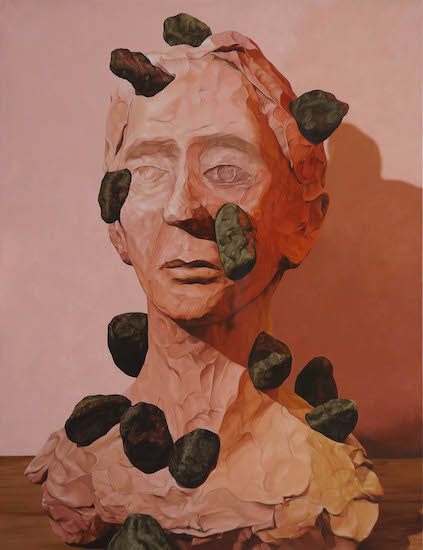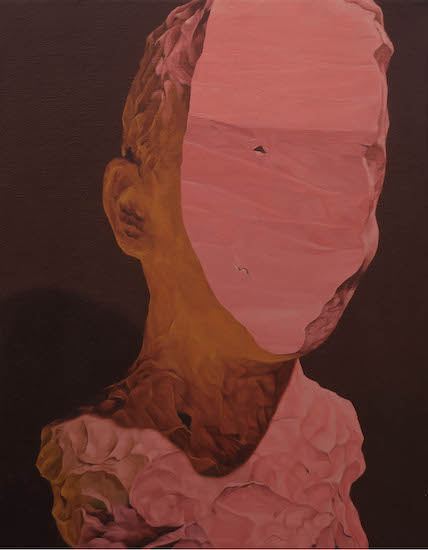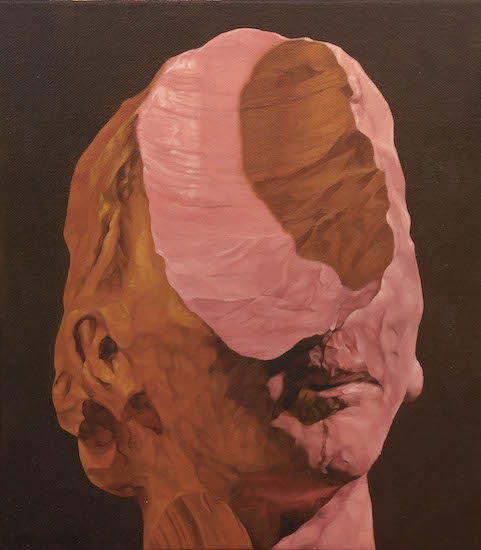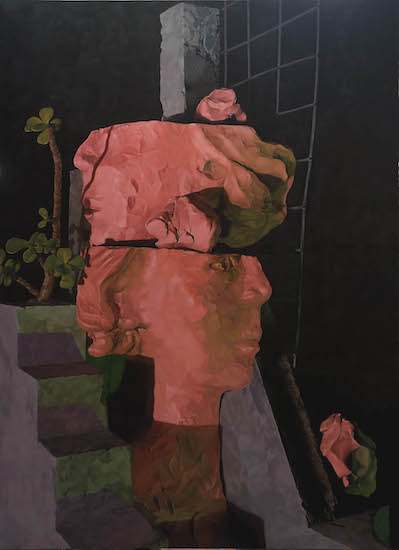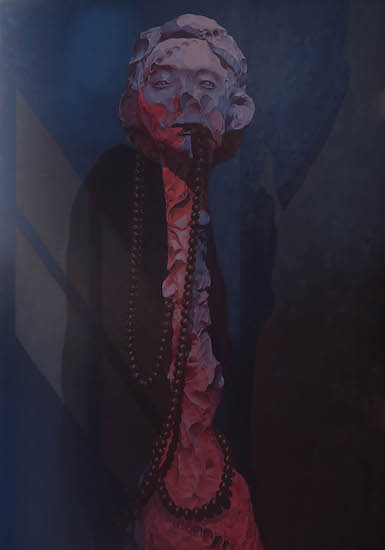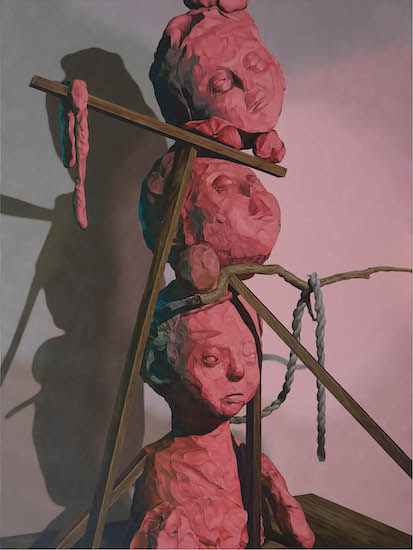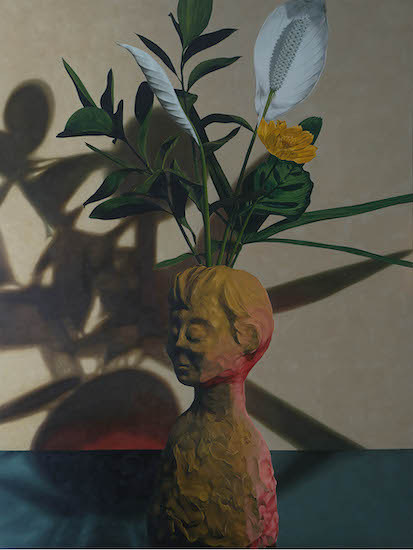Yavuz Gallery is pleased to present Light and Shadow, Wedhar Riyadi’s third solo show with the gallery. The exhibition debuts a new series of works that explores our current relationships with digital technology and its implications on visual representations in the genre of painting, of object and subject, real and apparent.
Based in Jogjakarta, Indonesia, Wedhar is part of a group of Indonesian artists whose work is strongly influenced by the era of change, which saw severe political and economic developments in the country, and an increasing influx of Japanese and Western popular culture in local entertainment. The impact of these socio-political changes found expression in his work, which appropriates and draws upon various forms of mass media to create surreal, absurdist worlds. In recent works, Wedhar explored the psychological depths of popular culture imagery, through distorting, rearranging and carving up imagery of the human figure.
In Light and Shadow, Wedhar continues his investigation on the influence of the digital age, taking a spotlight on its impact on our everyday experiences and senses. In our current era of the social media phenomenon, the domination of our sense of sight shapes our way of looking at others through an object lens. Yearning for a return back to our physical body as a feeling being, Wedhar began this new suite of paintings through manually composing the figures through clay sculptures. Dynamic and adaptive, the materiality of clay imprints presence of the artist’s hand and human touch.
The resulting works are then captured, digitally manipulated with artificial light, and translated into chiaroscuro paintings. Leaving traces of Wedhar’s original touch, the paintings blur the line between the still-life and self-portraiture, material and immaterial, object and subject, light and shadow.
ABOUT THE ARTIST
Wedhar Riyadi (b. 1980) is part of a group of Indonesian artists whose work is strongly influenced by the era of change, which saw the fall of the Suharto regime, the subsequent transition to democracy, and an increasing influx of Japanese and Western popular culture in local entertainment. The impact of these socio-political changes found expression in his work, which appropriates and draws upon various forms of mass media to create surreal, absurdist worlds.
Recently, Wedhar creates paintings that explore the pyschological depths of popular culture imagery and its implication. He focuses and expands upon the influence of the digital age and mass media, through distorting, rearranging and carving up imagery of the human figure.
Wedhar received his Bachelor of Fine Arts from the Indonesian Institute of Art in 2007. His wide-ranging practice encompasses drawings, paintings, murals, sculptures and illustration. Drawing upon various forms of mass media, Wedhar represents a generation of Indonesian artists whose works defy the traditional boundaries of fine art and popular culture. Wedhar has exhibited widely in Asia, Australia, Europe and USA. He participated in numerous editions of Art Jog (2021, 2020, 2018, 2017, 2016) and in the 7th Asia Pacific Triennale of Contemporary Art (2012). In addition to numerous private collections worldwide, his works are included in the collection of the Queensland Art Gallery | Gallery of Modern Art (Australia), National Gallery of Victoria (Australia), Anne & Gordon Samtag Museum of Art (Australia) and the Akili Museum of Art (Indonesia).
